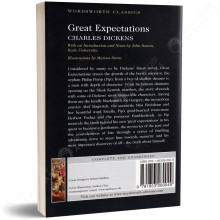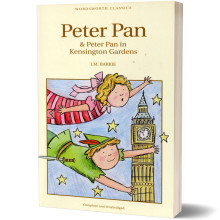The Jungle Book introduces Mowgli, the human foundling adopted by a family of wolves. It tells of the enmity between him and the tiger Shere Khan, who killed Mowgli’s parents, and of the friendship between the man-cub and Bagheera, the black panther, and Baloo, the sleepy brown bear, who instructs Mowgli in the Laws of the Jungle.
About the Book
The Jungle Book introduces Mowgli, the human foundling adopted by a family of wolves. It tells of the enmity between him and the tiger Shere Khan, who killed Mowgli’s parents, and of the friendship between the man-cub and Bagheera, the black panther, and Baloo, the sleepy brown bear, who instructs Mowgli in the Laws of the Jungle.
The Second Jungle Book contains some of the most thrilling of the Mowgli stories. It includes Red Dog, in which Mowgli forms an unlikely alliance with the python Kaa, How Fear Came and Letting in the Jungle as well as The Spring Running, which brings Mowgli to manhood and the realisation that he must leave Bagheera, Baloo and his other friends for the world of man.
About the Author
Rudyard Kipling
Joseph Rudyard Kipling (1865 – 1936) was an English poet, short-story writer and novelist. His stories of the British in India reached their height of popularity in the 1890s, but opinion turned against him as the public perception of the days of the Empire changed. With the passing of years, he can now be viewed from a historical perspective as a recorder of the world as it was then. His books for children, including 'The Jungle Book' and 'The Second Jungle Book' have an enduring appeal.
Poet, short-story writer and novelist, Rudyard Kipling was born 30 December 1865 in Bombay, where his father taught at a school of art before becoming director of the Lahore museum. The family connections on his mother’s side were distinguished: one of her sisters married the artist Edward Burne-Jones and a second was the mother of the politician Stanley Baldwin. Kipling was brought up by an ayah (nursemaid/governess), who taught him Hindustani as his first language.
In 1871 Kipling and his sister were sent to Southsea, England, and his unhappiness at this event was recalled in the story Baa, Baa, Black Sheep (1888). In 1878 he entered the United Services College, a boarding school in Westward Ho, North Devon, and the years he spent here were relatively happy and underlie the popular Stalky & Co. (1899), about adolescent boys at a British boarding school.. Kipling returned to India in 1882, where he worked as a journalist in Lahore on the Civil and Military Gazette. His familiarity with all levels of the Anglo-Indian community contributed to the freshness of the poems and tales which he wrote for the Gazette.
Kipling returned to England in 1889, and rapidly gained popularity in the literary circles of London. His first novel, The Light that Failed was published in 1891. In 1892 he married Caroline Starr Balestier, and they spent the years 1892-6 living near her family in Vermont, the United States. During this period he wrote The Jungle Book (1894) and The Second Jungle Book (1895).
By the time, his son John had been born (1897), the family had moved back to England, settling for a time in Torquay, Devon, on the southwest coast. Here, Kipling began work on two poems, Recessional (1897) and The White Man’s Burden (1899)
After 1898 Kipling spent a lot of time in South Africa, including a period during the Boer War.
Kipling is best known for his works of fiction, including The Story of the Gadsbys (1888), The Phantom Rickshaw and other Eerie Tales (1888) The Seven Seas (1896), Captains Courageous (1897), Kim (1901), and Just So Stories (1902); also many short stories, including The Man Who Would Be King (1888), Puck of Pook’s Hill (1906), Rewards and Fairies (1910) and his poems, including Mandalay (1890), Gunga Din (1890), The White Man’s Burden (1899) and ‘If’ (1910). He is regarded as a major innovator in the art of the short story.
In addition to those works of Kipling which are in bold type, Wordsworth Editions publish, The Best Short Stories, Collected Poems, and Strange Tales.
Widely regarded as the unofficial Poet Laureate, some people claim he was offered this post, but refused it, along with other honours, including the Order of Merit. After he received the Nobel Prize for Literature (1907), his output of poetry and fiction declined. Between 1922 and 1925 he was rector at the University of St Andrews.
He died on 18 January, 1936 and was buried in Poet’s Corner at Westminster Abbey.
- Langue
- Anglaise
- Dimensions
- 127 mm x 198 mm
- Edition
- Wordsworth Editions
- Collection
- Wordsworth Classics Complete and Unabridged
- Auteur
- Rudyard Kipling
- Poids
- 261 g
- Nombre de pages
- 397 pages
- Date de Parution
- 09/05/1993
- Série
- Children's Classics



































